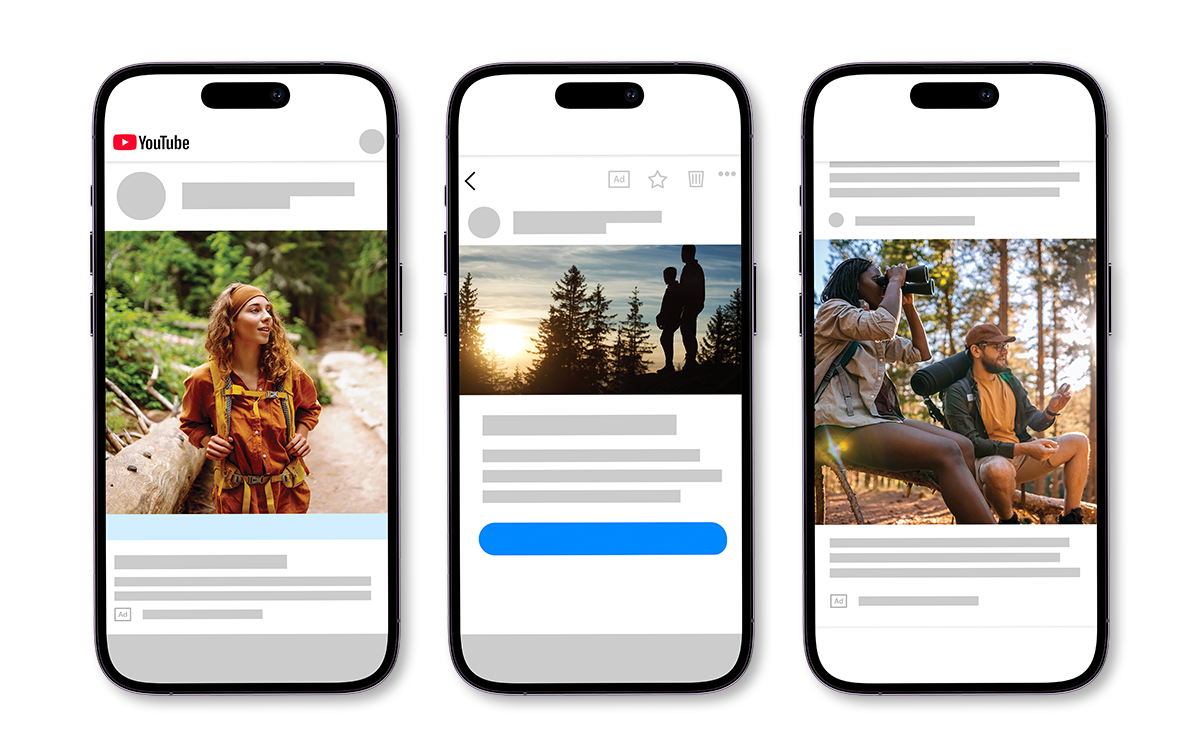Discover how Google's ad formats adapt to every ad placement without the hassle
In today’s fast-paced digital landscape, effective advertising is all about reaching the right audience at the right time, with the right message. Google’s responsive ad solutions offer powerful ways to achieve this, moving beyond traditional static banners to dynamic, adaptable campaigns. This blog will break down the different types of Google ad creatives and why they’re essential for modern advertisers.
Why use responsive ads and give up creative control?
Google will test different asset combinations and use the assets that perform best. This is also known as optimized creative. Responsive ads save time by creating multiple ad sizes. These ads increase overall reach by automatically adapting to any ad space, making it easier for audiences to see ads in the right place at the right time.

Google Responsive Display Ads: Adapting to Every Screen
Google Responsive Display Ads automatically adjust their size, appearance and format to fit available ad spaces by utilizing assets that an advertiser provides. These assets include images, headlines and descriptions.
Google Video Ads (YouTube Ads): Engaging Audiences with Motion
Google Video Ads, also known as YouTube Ads, may be placed on websites other than YouTube, but advertisers can opt to select YouTube as the only placement. Similar to responsive display ads, advertisers add copy to mix and match along with visuals. Video ads are responsive because they adapt to fit ad spaces, including different spots on YouTube’s website, like in-stream or on its homepage. These ads are best suited for lead-focused or revenue-focused ad campaigns, or for more complex campaigns that require additional information beyond what can fit into a single display ad.
Google Search Ads: Reaching High-Intent Audiences
Search ads appear on search engine results pages. An advertiser will feed Google keywords, headlines and descriptions, and Google will determine when and how to serve audiences search ads. If someone’s search matches a keyword you provide, your ad may appear depending on its quality and bid amount.
Search ad copy must match targeted keywords to serve the right ads to the right people. For this reason, search ad copy may look different than other ad copy because it is generally more technical. This ad type is best for high-intent conversion audiences — people searching for products or services offered by a brand, but not searching for the brand itself.

Google Performance Max Ads: All-in-One Campaign Powerhouse
Performance Max (PMax) campaigns are search, display and video all in one. Advertisers provide copy, images and videos for Google to mix and match in many different formats. PMax ads can be search ads, display ads, video ads, and ads on Google Maps Gmail, or other Google properties. These campaigns are best for conversion-focused campaigns, specifically for travel and hospitality.
By leveraging Google’s responsive ad solutions, advertisers can create highly adaptable and effective campaigns that maximize reach and drive desired outcomes. The Russell Herder digital team constantly stays on top of trends in order to innovate our digital ad solutions.
The Russell Herder digital team constantly stays on top of trends in order to innovate our digital ad solutions.





